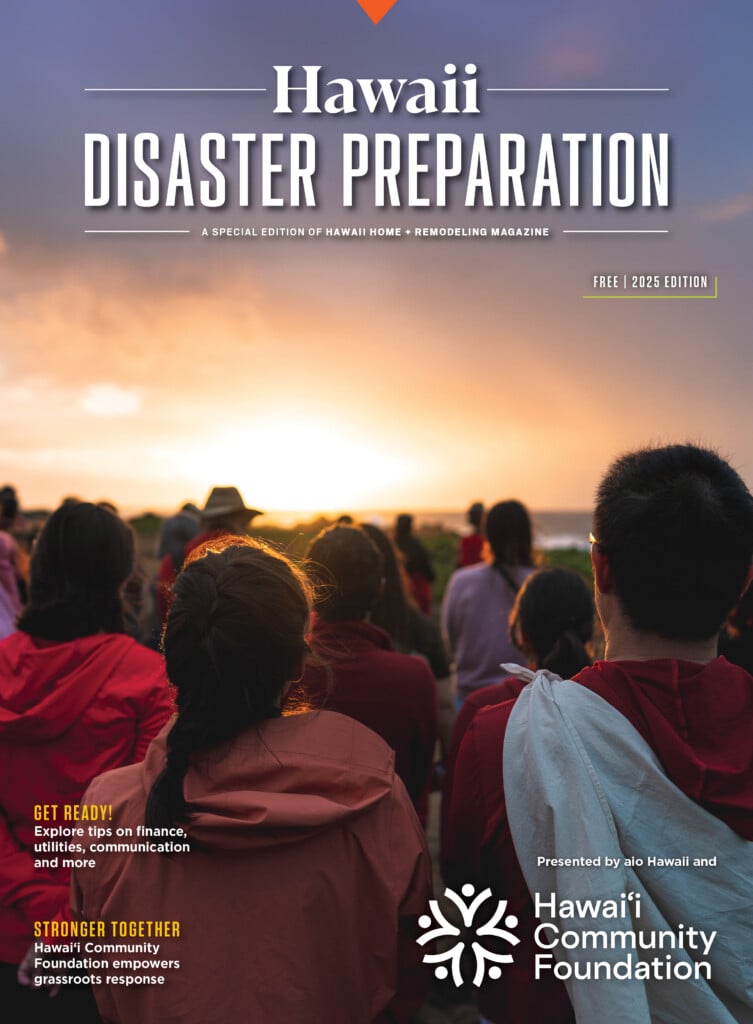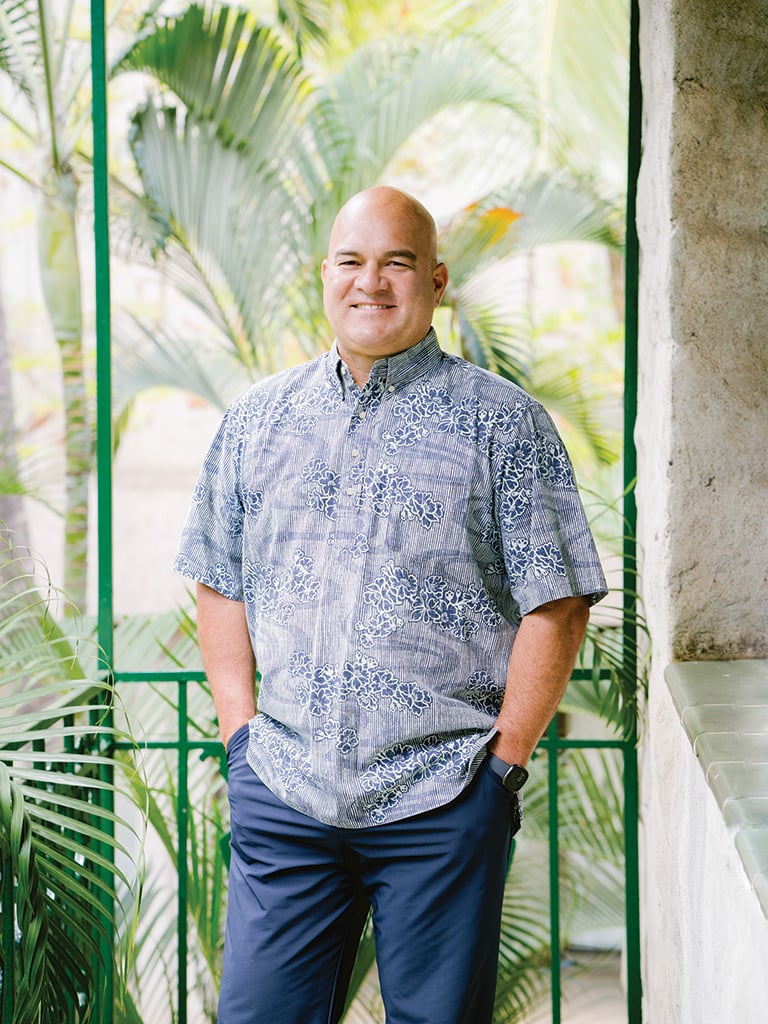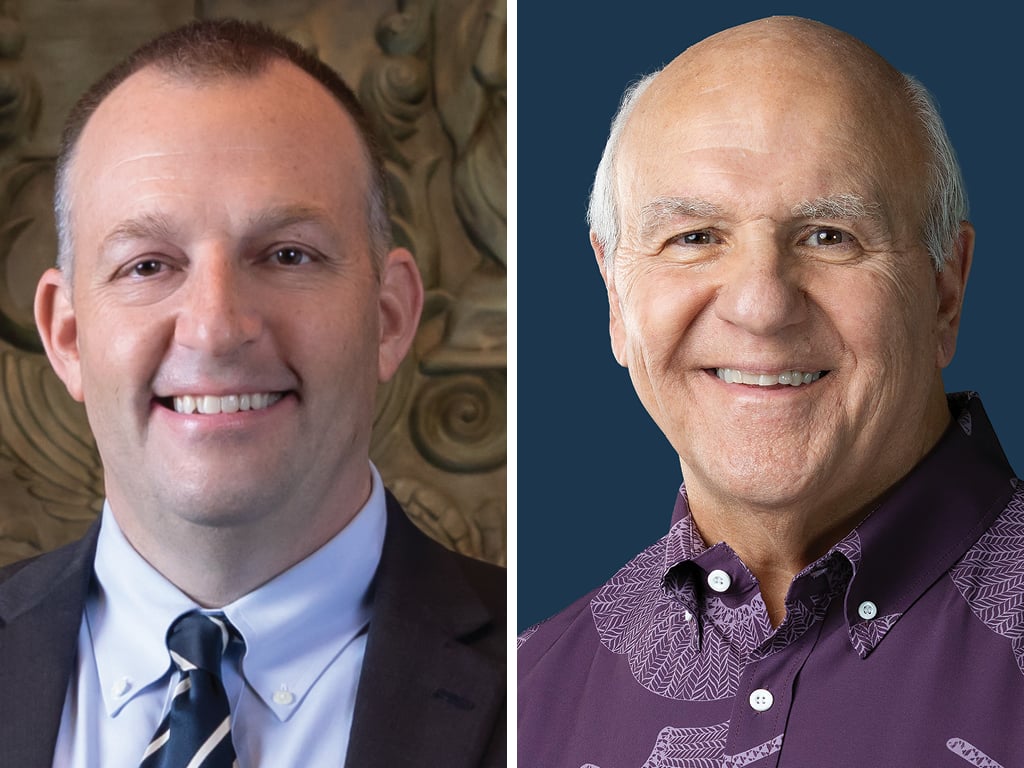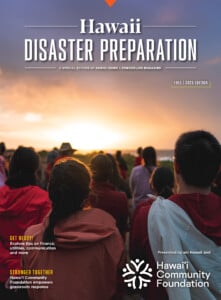Financial Readiness for the Unexpected
Experts share simple steps to protect your money and your ohana.
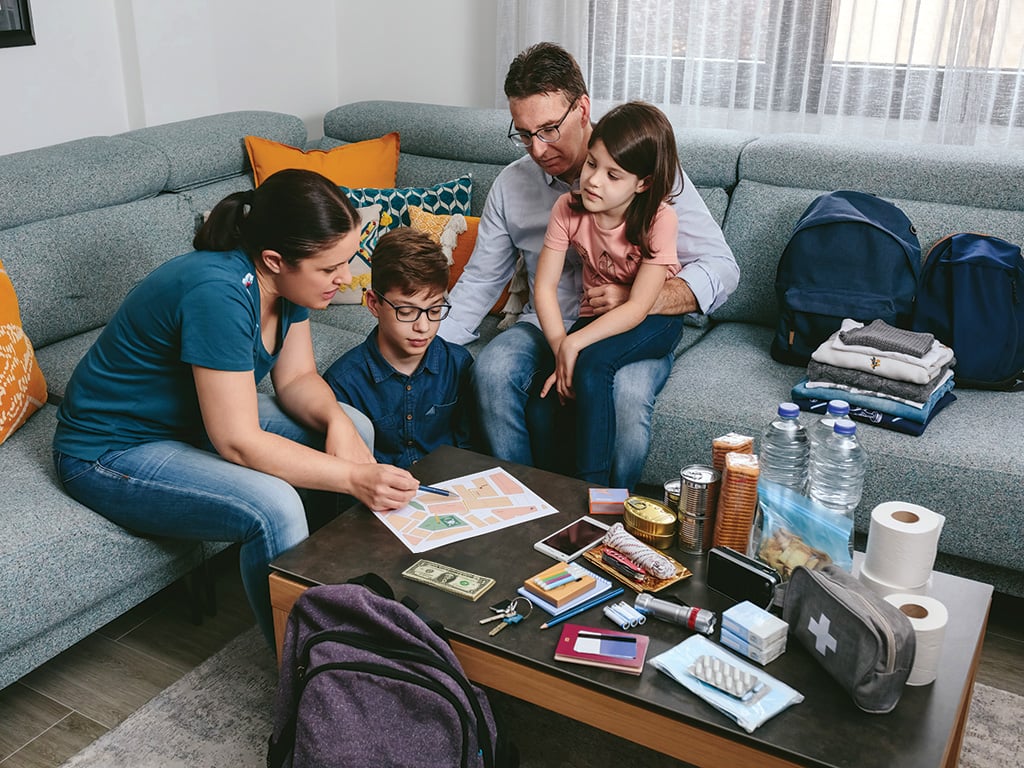
Featured photo: Include cash in your family’s emergency kits and talk with your ohana about key financial steps to take after a disaster.
Saving money for a rainy day is more than just an old saying — it’s an essential strategy for prudent preparedness. Having a financial plan in place provides peace of mind when disaster strikes. Local experts Emi Au of HawaiiUSA Federal Credit Union, Long Vo of American Savings Bank, and Vernon Wong of First Hawaiian Bank share tips for getting financially ready, from building an emergency fund to navigating the critical days after a disaster.
Start with a Plan
Emergency prep is an annual “ritual” for Au and her ohana. Together, they review key phone numbers, evacuation routes, meeting spots, and check their home’s safety devices. The family includes financial planning and insurance policies in their discussions.
“We pick a night, grab some snacks, and go over our emergency plan together,” says Au, chief financial officer at HawaiiUSA. “We talk to our kids about where the money is, how to access it, and when it’s okay to use it. Plus, it’s a great life lesson in being prepared and responsible.”

At HawaiiUSA Federal Credit Union, CFO Emi Au (left) and financial wellness lead Joanne Ching promote smart planning for emergencies and beyond.
Getting organized is a major first step, agrees Wong, senior vice president at First Hawaiian Bank.
“You wouldn’t wait for a rainstorm to patch your roof,” he says. “It’s the same with your finances. Know where your accounts are, keep your insurance info in one place, and make sure your coverage fits your needs — especially homeowners, hurricane and flood insurance.”
Smart Saving
Building an emergency fund may sound daunting, but if you start small — and start now — the savings you set aside can provide the cushion you need to get through an emergency.
“In Hawaii, two out of five residents don’t have enough saved to cover three months of expenses,” says Au. Depositing $10 or $25 per paycheck in a separate savings account can make a difference in difficult times. Tax refunds, bonuses or even loose change can help boost your balance.
Consistency is key, says Vo, senior vice president at American Savings Bank. ASB provides an online emergency fund calculator to help set realistic savings goals.
“Automating your savings makes it effortless and helps you stay on track,” explains Vo. “A separate savings account with no or low fees is ideal.”
According to Wong, a prudent goal for financial readiness is to aim for an amount that covers up to a year of essential expenses.
“After the 2020 pandemic, we’ve seen how important that cushion can be,” he says. “Our personal bankers can help you open the right accounts and create a plan that works for you.”
Critical Timing
When a disaster happens, the first 24 to 48 hours are crucial. After making sure your ohana is safe, prioritize your next financial steps.
Vo recommends reviewing access to your funds right away, then contacting your insurance provider and bank for any needed support, like payment deferrals. Downloading your bank’s mobile app and adding your cards to a mobile wallet lets you make secure payments, even if your physical card is lost.
Vo also advises staying vigilant, documenting all damage and expenses, and watching out for scams that often follow disasters.
If power and internet are down, debit cards and mobile payments might not work. In this case, “having a little cash on hand can be a lifesaver,” says Au. “You’ll need it for food, water, gas or other essentials.”
By building a relationship with a banker before a crisis hits, you’ll have peace of mind during a time when many decisions must be made under a lot of stress.
“When you have someone who understands your situation,” says Vo, “they can act quickly with solutions tailored to your needs when it matters most.”



